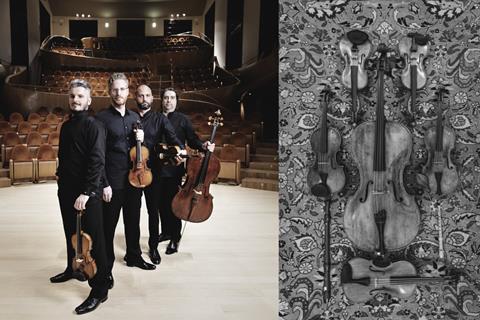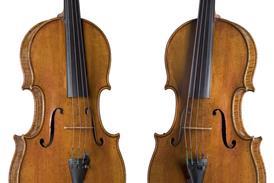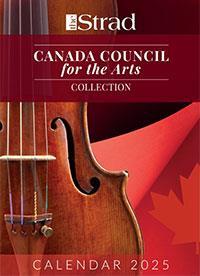The ensemble’s newest release sees second violinist Paolo Andreoli taking up the viola and violist Simone Gramaglia playing a tenor viola, in order to capture the essence of Bach’s contrapuntal writing

How many string quartet pieces require half the ensemble playing unfamiliar instruments - or in extreme cases, learning a new instrument completely?
The Quartetto di Cremona’s new release The Art of Fugue sees the ensemble using an innovative instrumentation to create a new interpretation of the work that has been several years in the making, coinciding with the group’s 25th anniversary.
Bach did not write The Art of Fugue with the string quartet instrumentation in mind. Several movements of the work see the inner lines going beyond the ranges of the second violin and viola.
To solve this issue, the group substituted in places a viola for the second violin, and a tenor viola in place of a standard instrument. Elsewhere, the violist takes up the recorder, with no less than eight instruments on stage lending a pioneering chorus-like nature to the work while preserving the original writing.
Of his foray into playing the viola, second violinist Paolo Andreoli said it was both an exciting educational experience and a challenge for him. He borrowed a viola named ‘Delfino’ from a luthier friend Salvatore Scalia for the recording and gradually felt more comfortable playing the viola once he overcame the initial difficulties.
Andreoli highlights two aspects of studying and preparing The Art of Fugue: ’The first concerns reducing the adaptation time necessary to switch from a small and light instrument like the violin to the much larger and heavier viola. The exercise was especially useful for concerts where, unlike recordings, time is very tight, and there is no way to warm up on the instrument before performing.
’The second aspect concerns understanding how to approach individual practice and adapt to the balance with the other instruments in the quartet, which in The Art of Fugue are very delicate and often fragile depending on the counterpoint.’

While Andreoli adopted the viola for the recording, violist Simone Gramaglia used a tenor viola that was made for him in 2012 by Pietro Gargini in Pistoia. He describes the instrument as ‘very big,’ measuring 45.7cm long, based on a model by Gasparo da Salò.
The tenor viola has four strings, tuned to D, G, C, F. Using a baroque bow on the instrument, Gramaglia says he initially tried to play the viola using gut strings, ’but the result wasn’t exactly the best on this instrument, so I just kept the gut D and switched on steel for G,C and F.’
Gramaglia spent plenty of time exploring the sound, articulation and resonance of the tenor viola, describing the sound capabilities of the instrument as ‘almost limitless.’
’It is a new world for me and I really wanted to understand it more and getting inside it.’ He credits intense talks with conductor and recorder player of Il Giardino Armonico, Giovanni Antonini, as well as cembalist Robert Hill, as a huge help to understand how to approach and play The Art of Fugue.
’The colour the tenor viola brings to the quartet is unique and makes the ensemble sound totally different. Personally, I can’t wait to play it again.’
The Art of Fugue will be released on Orchid Classics on 1 November 2024. Watch a performance of The Art of Fugue from 2021 for the Societa del Quartetto di Milano here:
Read: Why I only make violas: luthier Gabrielle Kundert
Read: The Viola’s White Knight: Hermann Ritter and the quest for the perfect Alto instrument
The number one source for playing and teaching books, guides, CDs, calendars and back issues of the magazine.
In The Best of Technique you’ll discover the top playing tips of the world’s leading string players and teachers. It’s packed full of exercises for students, plus examples from the standard repertoire to show you how to integrate the technique into your playing.
The Strad’s Masterclass series brings together the finest string players with some of the greatest string works ever written. Always one of our most popular sections, Masterclass has been an invaluable aid to aspiring soloists, chamber musicians and string teachers since the 1990s.
The Canada Council of the Arts’ Musical Instrument Bank is 40 years old in 2025. This year’s calendar celebrates some its treasures, including four instruments by Antonio Stradivari and priceless works by Montagnana, Gagliano, Pressenda and David Tecchler.





































No comments yet